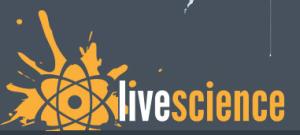LAB REPORT
Science and Technology Making Headlines
July 30, 2021


LLNL scientist Jennifer Pett-Ridge grows switchgrass in greenhouses to study ways to sequester CO2 underground.
Going deep
As greenhouse gases continue to pour into the atmosphere, researchers have struggled for solutions to harness dangerous pollutants like CO2. However, in a nursery at the University of California, Lawrence Livermore scientist Jennifer Pett-Ridge and her colleagues are gathering evidence for a solution that could be right under our feet.
Pett-Ridge splits time between UC Berkeley and Lawrence Livermore, searching for ways to sequester pollutants like CO2 underground, with the use of specific plants. In this case, switchgrass.
"It's root system can apocryphally go down 50 feet. We've measured it to 12 to 15, and I got sick of digging at that point," she said.
And deep is good. Especially if you understand that plants, including switchgrass, process the carbon that's in CO2 as part of photosynthesis, essentially pushing it down through their root system, where it interacts with nutrients in the ground. At depths of several feet, researchers say the CO2 is essentially sequestered from the atmosphere


Clouds float over Millennium Island, Kiribati, one of the lowest-lying nations on Earth. Scientists are using machine learning to study the relationship between clouds and climate change. AP Photo by Katsumi Kasahara.
Look to the sky
One of the most fundamental questions about climate change also is one of the thorniest: How much, exactly, will the Earth warm in response to future greenhouse gas emissions? The answer, scientists say, lies in the sky above our heads. Clouds are the fluffy gatekeepers of climate change — they play a critical role in how quickly the world warms.
Recent studies used real-world observations to draw their conclusions. They compiled large quantities of data on cloud behavior — how clouds react to changes in temperature, humidity and other weather variables — and then conducted statistical analyses of those observations to figure out how clouds are likely to respond to future climate change.
It’s a fairly traditional way of tackling the problem, according to Mark Zelinka, a climate scientist and cloud expert at Lawrence Livermore National Laboratory.
Zelinka added, it’s reassuring that different strategies, including machine learning, have arrived at similar conclusions.
“If it was just one study, you might question the robustness of that result,” Zelinka said. “But if you’ve got more and more evidence from independent authors using independent techniques, and they’re all reaching a similar conclusion, that’s pretty powerful.”


The U.S. Postal Service recently issued stamps celebrating images of the sun from NASA’s Solar Dynamics Observatory. LLNL played a critical role in the optics on board the spacecraft.
A stamp on the sun
The U.S. Postal Service has issued a set of stamps to celebrate a decade of watching the sun from NASA's Solar Dynamics Observatory (SDO). The Sun Science stamps draw attention to the different views of the sun as seen from the SDO.
Lawrence Livermore has played a large role in the development of the imaging optics aboard the SDO. The LLNL team and collaborators have been instrumental in the design, development, fabrication and calibration of the multilayer mirrors aboard the SDO imaging telescopes. The SDO multilayer mirrors act as reflective lenses and are responsible for capturing the images and movies of the sun produced by SDO at seven extreme ultraviolet wavelengths.
Each stamp highlights different characteristics of the sun: coronal loops, coronal hole, solar flare, active sun, plasma blast and sunspots.
The SDO spacecraft was launched in 2010 and began collecting data a few months later with two imaging instruments that provide complementary views of the sun. It also measures the sun's magnetic field and the motion of solar material at its surface and also allows scientists to probe deep into the sun's interior.


Almost all organic material that enters soil will get digested by microbes.
Soil science revolution
Scientists describe soil as a world unto itself, with the equivalent of continents, oceans and mountain ranges. This complex microgeography determines where microbes such as bacteria and fungi can go and where they can’t, what food they can gain access to and what is off limits.
A soil bacterium “may be only 10 microns away from a big chunk of organic matter that I’m sure they would love to degrade, but it’s on the other side of a cluster of minerals,” said Lawrence Livermore soil scientist Jennifer Pett-Ridge. “It’s literally as if it’s on the other side of the planet.”
Another related, and poorly understood, ingredient in a new soil paradigm is the fate of carbon within the soil. Researchers now believe that almost all organic material that enters soil will get digested by microbes.


The July 24, 1946 Baker Test in the initial seconds of the explosion at Bikini Atoll. Notice the mushroom cloud forming immediately after the explosion.
Why do nuclear bombs form mushroom clouds?
When a bomb goes off, energy is shot out indiscriminately in all directions. So, instead of an expanding ball of fire, why do nuclear explosions result in mushroom clouds?
Although the outburst of energy does initially form a sphere of hot air, that's only the beginning of the story, according to Katie Lundquist, a researcher of computational engineering at Lawrence Livermore National Laboratory. Because hot air rises, the larger bulk of the sphere in the middle column — where the core of an apple would be — experiences more buoyancy than the edges do.
“The way that a sphere is shaped, you have the largest column of the low-density fluid in the middle, so that rises the fastest,” like the middle of a cupcake rising in the oven, Lundquist said. Although in vernacular English we tend to use “fluid” and “liquid” interchangeably, for scientists, the term “fluid” can refer to either a liquid or a gas; both lack a fixed shape, are able to flow and can be described by the same suite of mathematical equations, according to Lundquist.





